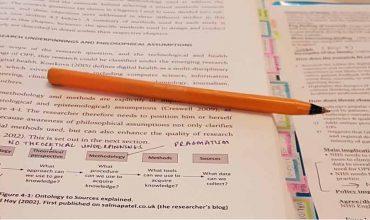Facing the Hurdle: Understanding Common Paper Rejection Reasons
The thrill of submitting your meticulously crafted research paper to a prestigious journal is undeniable. However, the journey from submission to publication isn’t always smooth sailing. Paper rejection is a common occurrence, and understanding the reasons behind it can significantly improve your chances of future success. This comprehensive guide explores the most frequent paper rejection reasons, equipping you to navigate the peer-review process with confidence.
Why Do Papers Get Rejected?
Academic journals maintain rigorous standards to ensure the quality and integrity of published research. Paper rejections occur when manuscripts fall short of these standards in various ways. Here’s a breakdown of some common reasons:
1. Lack of Originality or Novelty:
- Replicating Existing Research: If your paper doesn’t offer a fresh perspective or build upon existing knowledge, reviewers may deem it unoriginal and lacking in contribution to the field.
- Insufficient Literature Review: A weak literature review demonstrates a lack of understanding of current research in your area and fails to establish the significance of your study.
2. Flawed Research Design or Methodology:
- Methodological Weaknesses: Inadequate research design, inappropriate data collection methods, or poorly chosen analytical techniques can cast doubt on the validity of your findings.
- Sample Size Issues: A sample size that is too small can lead to statistically insignificant results, rendering your conclusions unreliable.
3. Unclear Writing and Poor Communication:
- Grammatical Errors and Awkward Phrasing: Typos, grammatical errors, and unclear sentence structure can make your paper difficult to understand and reflect poorly on your research skills.
- Inconsistent or Incorrect Language Usage: Incorrect terminology, jargon overuse, and inconsistency in verb tenses or voice can hinder the clarity of your message.
- Lack of Structure and Organization: A poorly structured paper with confusing arguments and a lack of logical flow can frustrate reviewers and leave them unable to grasp the significance of your work.
4. Weak Analysis and Interpretation of Results:
- Superficial Data Analysis: Failing to adequately analyze your data or relying solely on basic statistical tests demonstrates a lack of understanding of the research problem and limits the impact of your findings.
- Unconvincing Interpretation: Misinterpreting data or failing to connect results to existing literature weakens the overall argument and diminishes the paper’s contribution.
5. Inconclusive Findings or Insignificant Results:
- Studies with Negative or Unexpected Results: While negative results can be valuable, reviewers might prioritize papers with clear and significant findings that advance the field.
- Lack of Practical Implications: Research that fails to demonstrate the real-world significance or application of its findings may be deemed irrelevant by reviewers.
6. Not a Good Fit for the Journal:
- Misaligned Topic or Audience: Submitting a paper on a topic that falls outside the journal’s scope or targets a different audience significantly reduces its chances of acceptance.
- Not Addressing the Journal’s Focus: Failing to tailor your paper to the specific interests and research areas addressed by the journal can lead to rejection.
Beyond the Basics: Additional Rejection Reasons
- Ethical Concerns: Plagiarism, data fabrication, or ethical violations during research can lead to immediate rejection and potentially damage your reputation.
- Poor Authorship Practices: Unclear authorship order or disputes among co-authors can cast a negative light on your professionalism.
- Formatting Issues: Non-compliance with the journal’s formatting guidelines can create a negative first impression for reviewers.
Strategies to Reduce Your Risk of Rejection
- Thorough Research and Literature Review: Ensure your research builds upon existing knowledge and offers a unique contribution to the field.
- Meticulous Research Design and Methodology: Employ robust research methods, appropriate data collection techniques, and sound statistical analysis.
- Clear and Concise Writing: Prioritize clarity and precision in your writing. Proofread meticulously to eliminate errors and ensure consistent language usage.
- Strong Analysis and Interpretation: Perform a thorough analysis of your data and present a convincing interpretation of your findings. Connect your results to existing literature and highlight their broader implications.
- Target the Right Journal: Carefully research potential journals and ensure your paper aligns with their scope and target audience.
Conclusion: Embrace Rejection as a Learning Opportunity
Paper rejection, while disheartening, is a normal part of the academic publishing process. Analyze the reviewers’ feedback to identify areas for improvement. Use it as a chance to refine your research methods, strengthen your writing skills, and tailor your paper for a more suitable journal. With each submission, you gain valuable experience that strengthens your research and writing abilities, ultimately paving the way for publication success.
When you submit a paper to a journal, after a while they answer you. The answer can be one of the options including accepted, minor revision needed, major revision needed, or rejected. Obviously, if you received an accepted you do not need to do anything but waiting for your paper to be published. Minor or major revisions mean the paper needs some revision to be publishable, we would write about it on the horizon. Everybody tries to avoid getting a rejected answer. To do so, you need to be familiar with paper rejection reasons.
Paper rejection due to the lack of novelty
One of the most important features of a research paper is its novelty. You need to study on a new idea. A paper can get inspired by another one i.e. you can study a phenomenon discussed in a paper on a different field, differ the variables affecting a subject which is studied, etc.
The more creative a paper is, the more interesting it is. A paper
lacks in novelty would be boring which is a paper rejection reason itself.
Paper rejection because of design or analysis flaws
The design of research is the base of it and any problems in the base of something causes in wrong conclusions. The choice of research design should be accurate and strongly supported. You can read more on this in “How to write chapter 3”.
Furthermore, the analysis of a study has the same effect on a paper conclusion. As you know research with a wrong conclusion is of no value.
Ethical issues in research
Research ethical issues is a most paper rejection reason too, which can be of several types:
- Plagiarism which is copying
one or more sentence/s from other sources without citing them. - Submitting a paper in more
than one journal or submitting a paper which has been published or presented in
a congress. - Hurting people, animals,
environment, etc. in the research process.
Any ethical issue definitely results in paper rejection.
Scope of journal and paper
Adhere to the aim of your paper while you are in progress
and researching. Your findings and conclusion need to be an answer to your
research question. If it is not, it is possible to get a rejection.
In addition, you should submit a paper to a journal with the
same scope as it.




